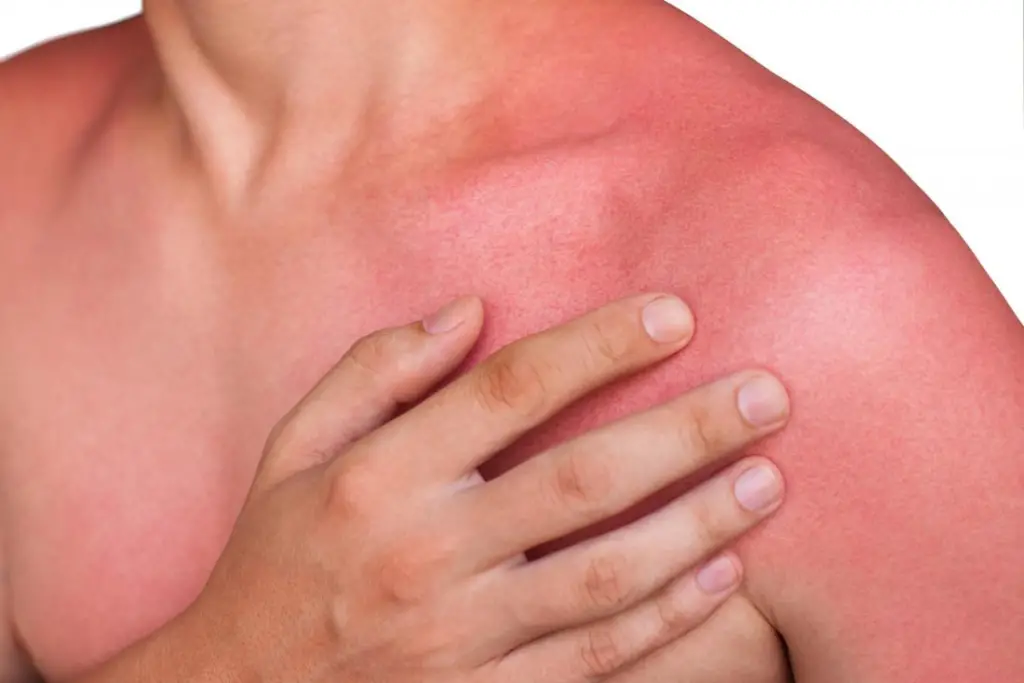The skin on our chest can sometimes become red due to a variety of reasons. In this article, we will discuss some of the most common causes of redness on the chest and what you can do to treat it.

Sunburn: One of the most common causes of redness on the chest is sunburn. When we spend too much time in the sun without protection, the skin can become damaged, resulting in redness, pain, and even blistering. To avoid sunburn, it’s important to wear sunscreen with an SPF of at least 30, reapply every two hours, and seek shade during the hottest parts of the day.
Allergies: Another possible cause of redness on the chest is an allergic reaction. When we come into contact with something we’re allergic to, our body releases histamines that can cause redness, itching, and swelling. Common allergens include certain fabrics, detergents, and skincare products. If you suspect that you have an allergy, try to identify the culprit and avoid it in the future. Over-the-counter antihistamines can also help to alleviate symptoms.
Rosacea: Rosacea is a chronic skin condition that can cause redness on the face, chest, and other areas of the body. It’s characterized by small, red bumps and visible blood vessels. The exact cause of rosacea is unknown, but it’s believed to be related to genetics, sun exposure, and certain triggers such as alcohol and spicy foods. There is no cure for rosacea, but treatments such as topical medications, oral antibiotics, and laser therapy can help to manage symptoms.
Eczema: Eczema is a common skin condition that can cause redness, itching, and inflammation. It’s characterized by dry, scaly patches of skin that can appear anywhere on the body, including the chest. Eczema is believed to be caused by a combination of genetics, environmental factors, and an overactive immune system. Treatment options include topical corticosteroids, moisturizers, and avoiding triggers such as harsh soaps and detergents.
Psoriasis: Psoriasis is a chronic autoimmune condition that can cause red, scaly patches of skin. It’s believed to be caused by an overactive immune system that triggers the rapid growth of skin cells. Psoriasis can appear anywhere on the body, including the chest. Treatment options include topical medications, phototherapy, and oral medications.
Contact Dermatitis: Contact dermatitis is a skin reaction that occurs when the skin comes into contact with an irritant or allergen. Symptoms include redness, itching, and inflammation. Common irritants include certain fabrics, detergents, and skincare products. Avoiding the irritant is the best course of action, but over-the-counter creams and ointments can help to alleviate symptoms.
Fungal Infections: Fungal infections can also cause redness on the chest. Tinea versicolor is a common fungal infection that can cause red, scaly patches of skin. It’s caused by an overgrowth of yeast on the skin and is more common in hot, humid climates. Treatment options include topical antifungal medications and oral medications.
In conclusion, there are many possible causes of redness on the chest, ranging from sunburn and allergies to chronic skin conditions such as rosacea and psoriasis. If you’re experiencing redness on your chest that doesn’t go away or is accompanied by other symptoms such as itching, pain, or swelling, it’s important to see a healthcare provider for an accurate diagnosis and treatment plan. By identifying the underlying cause of the redness and taking steps to treat it, you can achieve relief and maintain healthy, glowing skin.